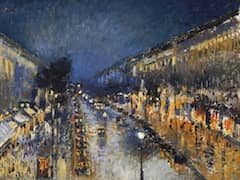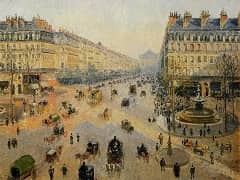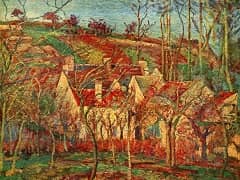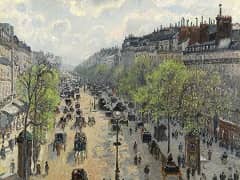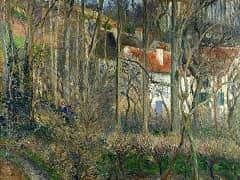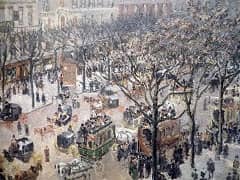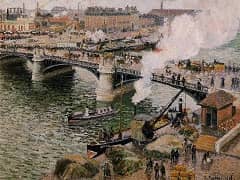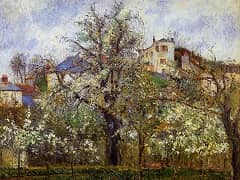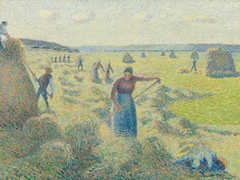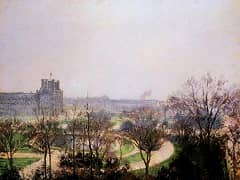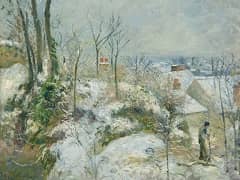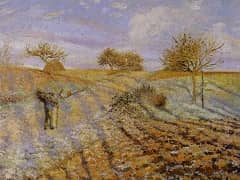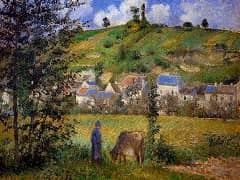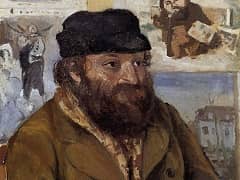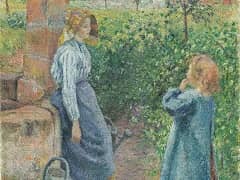The Little Country Maid, 1882 by Camille Pissarro
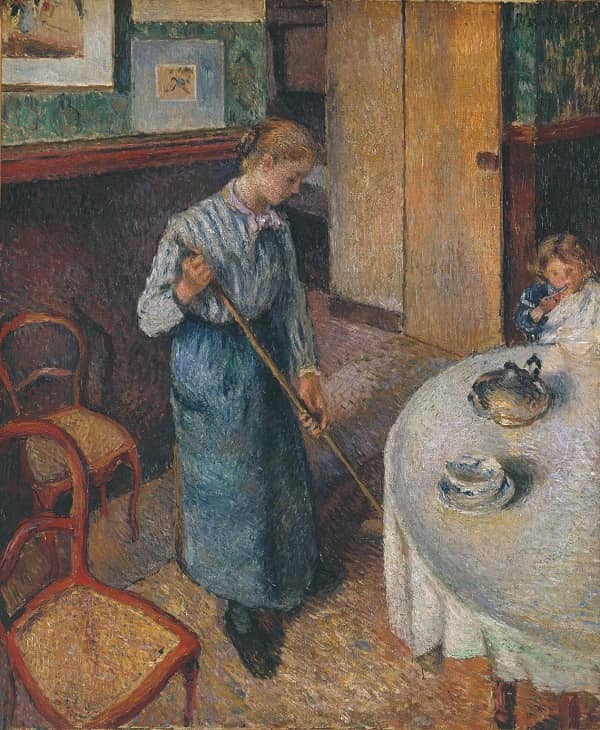
Pissarro has depicted an apparently simple, domestic interior. A maid is quietly brushing the floor, while a small child seated at a table eats his breakfast. Although the composition focuses on a figure involved in a
physical action the scene is totally static. The moment has been held, rather like a snapshot. Pissarro has achieved this stillness by surrounding the people in the picture with a variety of inanimate, recurring shapes.
The circular forms of the teapot and cup and saucer are reflected in the round curve of the table, the chair backs and the waist and skirt of the maid. The strong vertical lines of the doorway are reinforced by the legs
of the chair in the foreground and the parallel sides of the picture frames, while the band of carpet on the floor is reinforced by the cornice, and the whole is anchored by the diagonal brush handle. The immobility of
these objects and their careful placement in conjunction with each other enforce a static quality on the figures, making the painting literally a still-life.
It has been suggested that this type of composition was influenced by Edgar Degas, who also had a tendency to place figures at the very edge of the canvas as if they had been cut
off by the picture frame. The small boy seated at the table is almost certainly Pissarro's son Ludovic-Rodo, who would have been four when this painting was executed.

